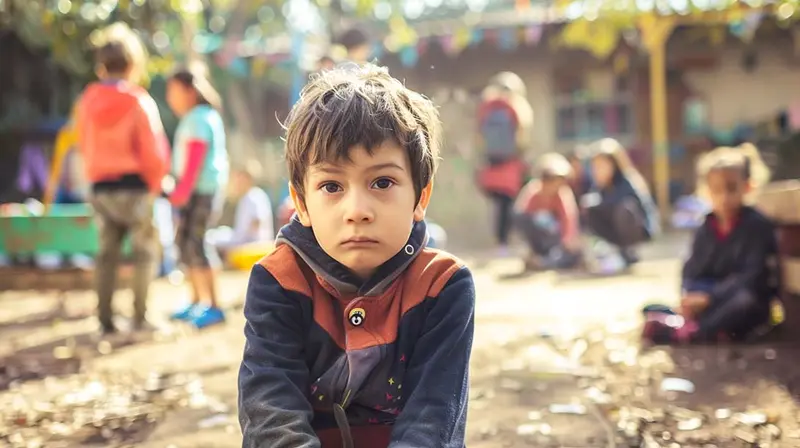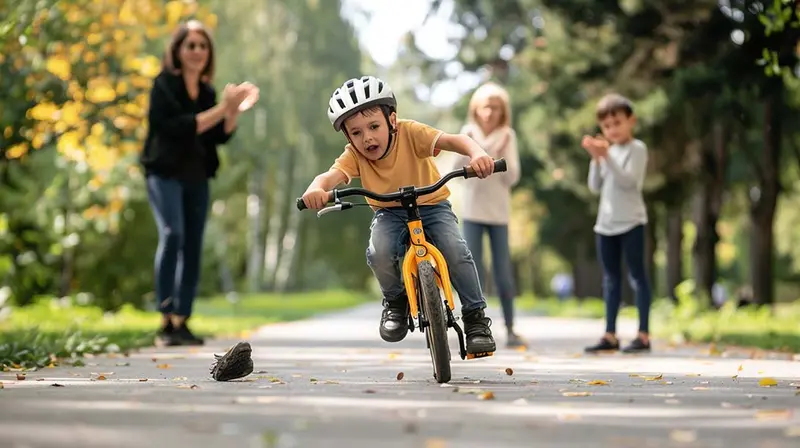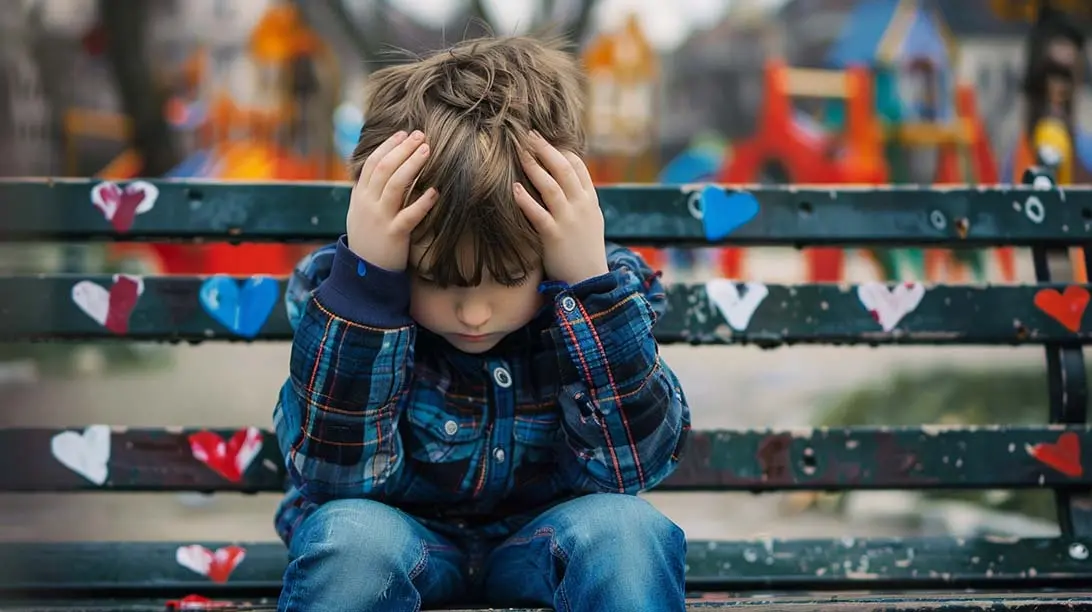Building self-esteem in young kids is a critical task for every parent. This article zeros in on why self-esteem matters in childhood and offers you tangible steps to help your child recognize their value, overcome challenges, and develop lasting confidence. Get ready to empower your child, starting now.
Key Takeaways
- Self-esteem in young kids is shaped early in life by everyday interactions and family dynamics, requiring parents to promote independence, decision-making, and resilience to shape a child’s self-perception and confidence.
- Recognizable signs of low self-esteem in children include behavioral changes such as withdrawal, difficulty in social and academic areas, and negative self-talk, which parents should address with strategies that reinforce positive behaviors and self-image.
- Parents play a critical role as role models in developing a child’s self-esteem by providing unconditional love, support, and guidance, and should seek professional help if a child’s low self-esteem severely affects their daily life.
Understanding Self-Esteem in Young Kids

Let’s start by understanding what self-esteem actually is. Self-esteem refers to the way individuals think and feel about themselves, which plays an integral role in their overall development. It’s like a mental health barometer, contributing to feelings of self-worth and guiding individuals through challenging times.
But how do we foster good self-esteem in our young ones? It all begins with helping them appreciate their unique qualities. Teaching children to value their individuality is crucial in preventing unfavorable comparisons with others, thus nurturing a healthy sense of self-esteem.
The Development of Self-Esteem: Key Stages and Influences

The journey of self-esteem begins early in life, shaped by everyday interactions and experiences. It’s like a compass guiding almost every aspect of a child’s life, influencing decision-making, motivation, and even their willingness to try new activities.
But self-esteem doesn’t evolve in isolation. It thrives on family pride and mutual respect, often referred to as family self-esteem. Moreover, positive role models enhance children’s social skills, helping them establish healthy relationships, a key factor in nurturing self-esteem.
It’s about empowering children with the confidence to face life’s challenges effectively.
Identifying Signs of Low Self-Esteem in Young Kids

So, how do you spot low self-esteem in your child? It’s like a puzzle with pieces scattered across behavioral, emotional, academic, and social domains of your child’s life.
Let’s delve into these aspects to decode the mystery of low self-esteem and low self esteem find solutions.
Behavioral Signs
Behavioral signs often serve as the first red flags of low self-esteem. Your child might:
- Withdraw
- Become excessively clingy
- Avoid tasks where they feel insecure
- Exhibit mood swings
- Show frustration
- Lie when facing potential failure
This dishonesty is often a defense mechanism to mask feelings of inadequacy.
Sometimes, these signs might seem counter-intuitive in a young child. For instance, a child might act in a controlling, bossy, or inflexible way to compensate for feelings of powerlessness or inadequacy. Or, they might display regressive behavior, like behaving in a babylike or overly silly manner, which often results in teasing by their peers.
Emotional Signs
Emotional signs of low self-esteem can be a bit tricky to spot. They often bubble up as negative self-talk. Frequent self-critical comments like ‘I never do anything right’ or ‘Nobody likes me’ are tell-tale signs of low self-esteem in children.
This negative self-talk is often coupled with heightened sensitivity to criticism and difficulty accepting compliments. It’s like walking on eggshells, where even a seemingly innocuous comment might be perceived as an attack on their self-worth.
Academic and Social Signs
The tentacles of low self-esteem also extend to a child’s academic and social life. Academically, they might struggle to keep up with their peers, leading to a noticeable decline in grades and a reduced interest in previously enjoyable activities.
Socially, children with low self-esteem might withdraw, losing touch with friends or showing an unwillingness to participate in social events. This withdrawal can exacerbate the issue, leading to difficulties in forming new friendships and maintaining existing ones.
Building Blocks of Healthy Self-Esteem

Now that we’ve identified the signs of low self-esteem, let’s turn our focus to building healthy self-esteem. What are the key building blocks? How can love and support, independence, and resilience act as pillars of self-esteem? Let’s explore.
Unconditional Love and Support
Imagine the warmth and security of being wrapped in a snug blanket of love and affection. This is what unconditional love and support feel like to a child. It forms the bedrock of building strong self-esteem.
Parents can reinforce their child’s self-worth by consistently showing love and affection, affirming the child’s importance within the family. It’s about letting children know they are loved even in times of failure or when making bad decisions, which helps to separate their worth from their actions.
Encouraging Independence and Decision-Making
As parents, it’s tempting to shield our children from every stumble. However, fostering independence and decision-making can significantly boost their self-esteem. It’s like giving them the steering wheel of their lives, allowing them to navigate the roads, make turns, and even hit a few bumps along the way.
When children take on tasks, make their own choices, and take responsibility for those choices, they feel more powerful and responsible, contributing positively to their self-esteem. It’s about recognizing their attempts, showing the importance of effort irrespective of outcome, and instilling a sense of responsibility.
Fostering Resilience and Coping Skills
Resilience is like the spring in a trampoline, allowing children to bounce back from challenges and setbacks. Learning to experience failure helps children build resilience and develop problem-solving skills.
Encouraging children to identify and leverage their strengths contributes to a heightened belief in their capabilities and helps to build confidence, improving self-esteem. When children improve through persistence, they can feel proud of their achievements, and their confidence can significantly increase.
Practical Strategies for Boosting Self-Esteem in Young Kids

Knowing the building blocks of self-esteem is just the beginning. How do we apply these in practical scenarios to boost self-esteem in our children? Let’s hone in on strategies such as positive reinforcement, healthy risk-taking, and focusing on strengths and interests.
Positive Reinforcement and Genuine Praise
Positive reinforcement is like the wind beneath a child’s wings, propelling them to continue desirable behaviors. It involves offering praise tailored to a child’s efforts, such as cleaning up toys or working on personal hygiene, building their sense of self-confidence through genuine acknowledgment.
However, praise is a delicate tool. Too much can create unrealistic self-perceptions and diminish motivation. Hence, it’s important to teach children how to receive compliments, reinforcing their ability to accept positive feedback.
Encouraging Healthy Risk-Taking
Healthy risk-taking is an essential part of a child’s growth. It’s like a playground where child learn to manage and work through fear, using higher-order thinking skills and making age appropriate choices.
When children engage in play that involves risk-taking, they experience positive emotions, boosting their self-confidence. This not only enhances their problem-solving skills but also boosts their confidence, contributing to their overall development.
Focusing on Strengths and Interests
Every child is a unique blend of strengths and interests. Encouraging children to focus on these can help them develop a positive self-image. It’s like focusing on the colors in a rainbow, celebrating each hue’s individuality.
Parents can help your child discover their unique talents and qualities, valuing their strengths. Encourage them to communicate their needs, opinions, and beliefs, further reinforcing their self-esteem. By paying attention to the messages kids hear, you can ensure a positive environment for their growth.
Addressing Challenges and Overcoming Obstacles

The journey of self-esteem isn’t always smooth sailing. There could be challenges and obstacles along the way, but how we address them can make all the difference.
Let’s delve into some common challenges like dealing with failures, bullying, and peer pressure, and how we can overcome them.
Responding to Failure Constructively
Failure, though daunting, is a crucial part of a child’s journey. Accepting mistakes as a normal learning aspect fosters resilience and contributes to building self-esteem.
Parents can use their child’s failures as teachable moments, helping them accept imperfection and develop frustration tolerance. Encouraging a child to meet challenges with acceptance and willingness to learn prepares them for better outcomes in future situations.
Dealing with Bullying and Peer Pressure
Bullying and peer pressure can be formidable challenges for a child. Negative peer pressure can lead to harmful behaviors and can result in mental health issues like decreased self-confidence, and an increase in depression and anxiety.
Children with low self-esteem may be overly sensitive about others’ opinions and can be more easily swayed by negative peer pressure. As parents, it’s crucial to provide a supportive environment where a child’s self esteem can be nurtured, and children can openly discuss these pressures.
Seeking Professional Help When Needed
Despite our best efforts, there might be instances where professional help becomes necessary. If low self-esteem is severe enough to negatively affect a child’s everyday life, it’s crucial to seek professional assistance.
Role Modeling and Parental Influence on Self-Esteem
As parents, we’re not just caregivers to our children but also their role models. Our behavior has a significant impact on a child’s self-esteem, as children often absorb and imitate our behaviors.
We can model good self-esteem by displaying kindness and acceptance toward ourselves, and engaging in self-care. Positive role models, like parents who display integrity, respect, and empathy, can help children self esteem develop, leading to high self-esteem and the ability to model confidence to pursue success. In this way, we can effectively build self esteem in our children.
Summary
Let’s take a moment to reflect on our journey. We’ve explored the complex world of self-esteem in children, the vital role it plays in their development, and the various signs of low self-esteem. We’ve discovered the building blocks of healthy self-esteem and practical strategies to boost it. We’ve also addressed common challenges and the importance of parental influence. Here’s to empowering our young ones with the confidence to conquer the world!
Frequently Asked Questions
What is self-esteem?
Self-esteem is the way individuals think and feel about themselves, and it plays a crucial role in their overall development.
How can I boost my child's self-esteem?
You can boost your child's self-esteem by providing unconditional love and support, encouraging independence and decision-making, and fostering resilience and coping skills. This will help them develop a healthy sense of self-worth and confidence.
What are the signs of low self-esteem in children?
If you notice withdrawal, aggression, negative self-talk, or underachievement, these could be signs of low self-esteem in children. Pay attention to these behaviors and offer support to help boost their confidence.
How can I help my child deal with failure?
Helping your child cope with failure involves accepting mistakes as part of learning, using failures as teachable moments, and teaching them to accept imperfection and develop frustration tolerance. Embracing these ideas can lead to a positive outcome for your child.
When should I seek professional help for my child's self-esteem issues?
If your child's low self-esteem is significantly impacting their daily life, it's important to seek professional help to address the issue.
References and Further Reading
Enhance your understanding of childhood self-esteem with these key resources:
- Childhood Mental Health and Wellbeing Trends - The Australian Bureau of Statistics presents data from a national study, underscoring the importance of mental health in the context of young children's self-esteem.
- Physical Activity's Impact on Children's Self-Esteem - This report by the Australian Institute of Health and Welfare explores how physical activity contributes to children's psychosocial well-being and self-esteem.
- Exploring Children’s Mental Health - The Centers for Disease Control and Prevention (CDC) provides a comprehensive look at children's mental health and its relation to self-esteem.
- Preventing Adverse Childhood Experiences (ACEs) - CDC discusses the prevention of ACEs, which is vital for the development of healthy self-esteem in children.
These resources offer a wealth of information for anyone seeking to support the development of self-esteem in children.
